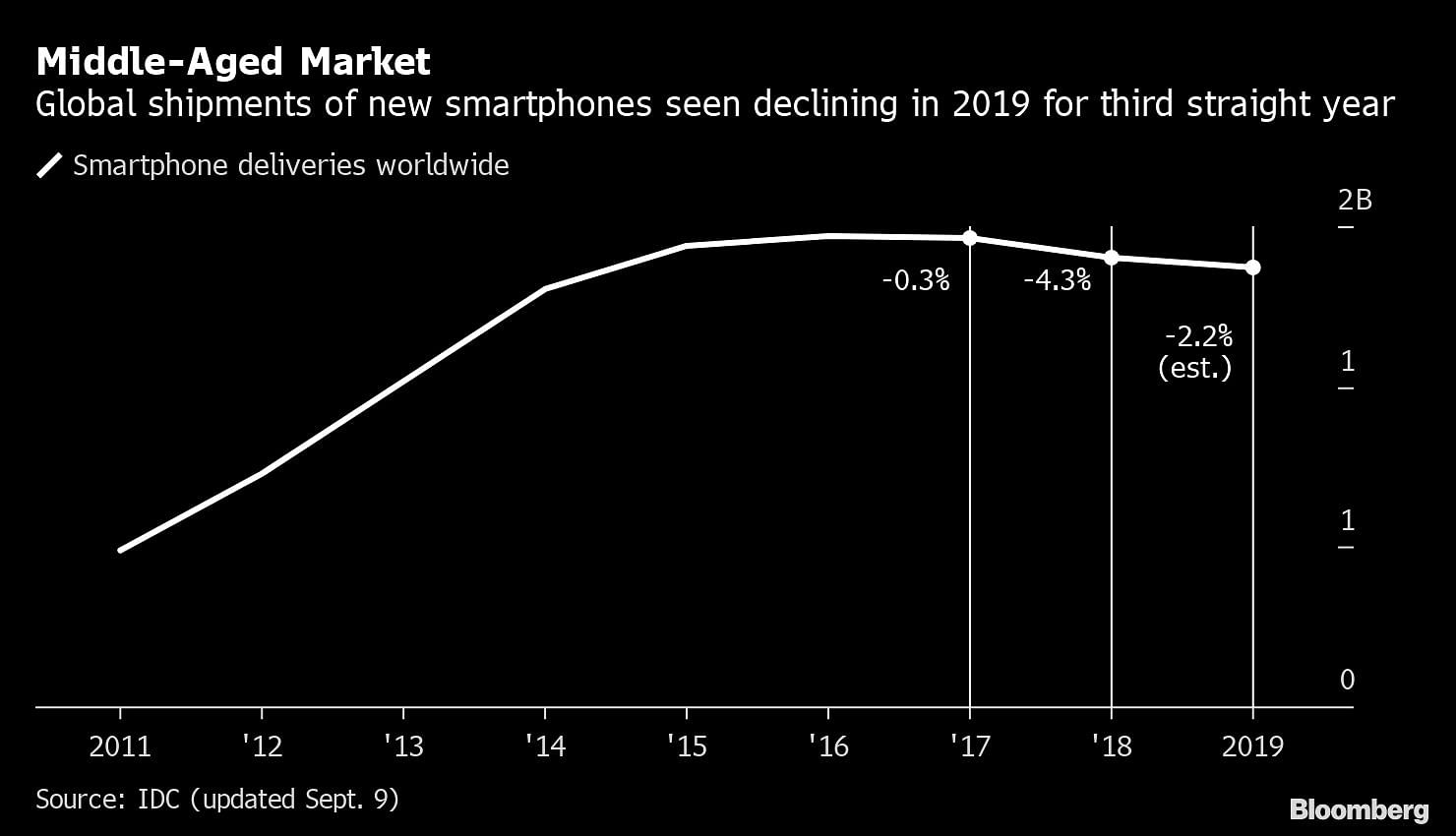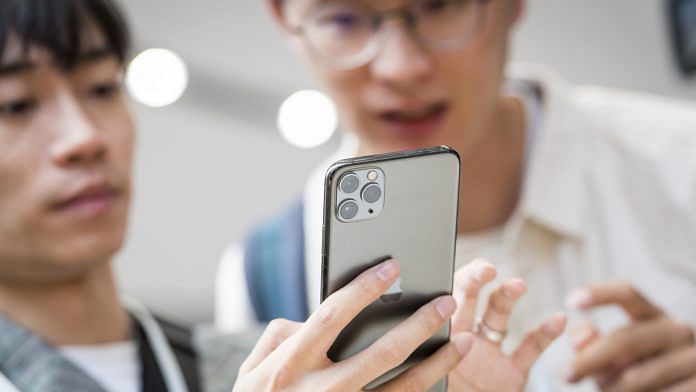San Francisco: Apple Inc. unveiled new iPhones with camera enhancements and improved battery life, making incremental tweaks to lure buyers ahead of a more substantial overhaul of its handsets in 2020.
Chief Executive Officer Tim Cook presented three iPhones on Tuesday during Apple’s annual product roll-out in Cupertino, California. The company also introduced updates to the Apple Watch, revealed pricing for new video and gaming subscription services, and debuted a low-cost iPad.
Many of the new iPhone features were expected, including upgraded camera capabilities, better water-resistance and improved Face ID unlocking technology. Still, Apple managed to save a few surprises, such as longer battery life for the iPhone Pro models and aggressive pricing.
Apple, a pioneer of the smartphone era, has struggled recently to maintain the once-frenzied demand for the company’s best-selling product. Most Western and Chinese consumers already own a smartphone and are more reluctant to upgrade due to high prices, cheaper rivals and a lack of new, breakthrough features. Researcher IDC forecast industry shipments to slip 2.2% in 2019, the third year of declines. IPhone shipments are seen dropping 15% this year, according to IDC. New 5G wireless technology may bring back growth, but not until 2020, it said.
During last year’s holiday period, Apple missed its own sales estimates for the first time in about two decades. This year, Apple is hoping the latest models — and a slew of new digital services — will keep revenue growth ticking along until bigger handset updates in 2020. Analysts expect total revenue to climb 2 per cent year-over-year in the 2019 holiday quarter, according to data compiled by Bloomberg.
The iPhone 11, iPhone 11 Pro, and iPhone Pro Max are successors to the iPhone XR, iPhone XS, and iPhone XS Max lines. They look similar from the front and continue to have the more advanced organic light-emitting diode screens on the high-end models, and a liquid crystal display on the regular iPhone 11. The new models will distinguish themselves from their predecessors with new colors and finishes as well as new photo capabilities that rival traditional cameras.

The iPhone 11 adds a second camera on the back for improved Portrait Mode, wide-angle shots, and deeper zoom without a reduction in clarity. The iPhone Pro and Pro Max gain a third back camera with new video and photo software. The phones also add Night Mode for improved pictures in the dark. Google has had this feature on its Pixel phones for some time. The front cameras on the new iPhones now are 12 megapixel and support wide-angle, 4K, and slow-motion image capture.
The iPhone 11 will come in green, purple, black, white, and red, while the iPhone Pro and Pro Max will come in space grey, silver, gold, and a new green color, Apple said.
The iPhone 11 will start at $699, below the $749 iPhone XR price from last year. The iPhone Pro starts at $999 and the iPhone Pro Max costs $1,099 or more. Those prices are the same as the iPhone XS and iPhone XS Max from last year.
“Price declines on Apple’s current models are something I haven’t seen in the past,” said John Butler, an analyst at Bloomberg Intelligence. “Very telling about the mature state of the smartphone market.”
Apple is keeping the XR and pricing it as low as $599, down from $749. The iPhone 8 stays, too, and will cost $449, also down from the previous price.
The U.S. government is set to impose 15% tariffs on the iPhone on Dec. 15. Other products, such as the Apple Watch, have already been hit with this levy. Apple doesn’t seem to be passing these extra costs on to consumers.

In addition to the camera features, the iPhone 11 adds stronger glass, an hour of more battery life compared to the iPhone XR, faster Face ID, and a new A13 chip. Here are the main upgrades coming to the iPhone Pro and Pro Max:
- A similar design to the iPhone XS and XS Max, but with new matte backs
- The A13 chip in the Pro models include upgrades to machine learning performance and low-power functionality
- iPhone 11 Pro will last four hours longer than the iPhone XS. The iPhone 11 Pro Max will last five hours more
- A new 18 watt charger to charge the device more quickly
- An upgraded camera app to take advantage of the three back cameras
- A new Deep Fusion mode that blends together nine photos to generate an image (this feature is launching via software update later this year)
- Live video editing in the Camera app
- Multi-angle Face ID
Apple was one of the first smartphone makers to sell handsets for more than $1,000, with mixed success. The company is working on another cheap iPhone, a successor to the iPhone SE, for next year, Bloomberg News recently reported. It’s also prepping bigger changes in 2020: a new design, 5G connectivity, and 3-D cameras for enhanced augmented reality apps, according to people familiar with the company’s plans. For next year or the year after, it’s planning in-screen fingerprint scanning. This year’s models all include Face ID, Apple’s facial-recognition technology for unlocking the phones.
The new models go on sale Sept. 20 after pre-orders open Sept. 13. That means some sales will be part of Apple’s current fiscal fourth quarter. –Bloomberg
Also read: Apple’s 3 new iPhones — XS, XS Max and XR — promise better camera, battery life (again)






